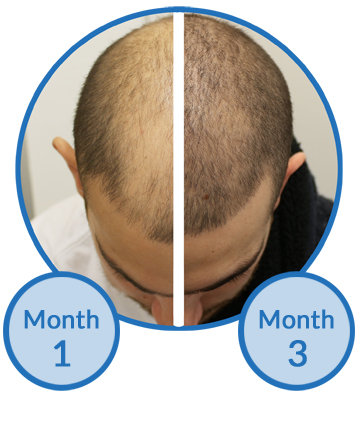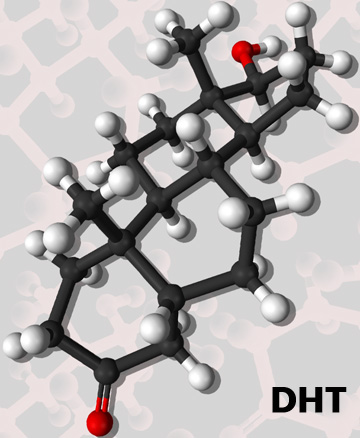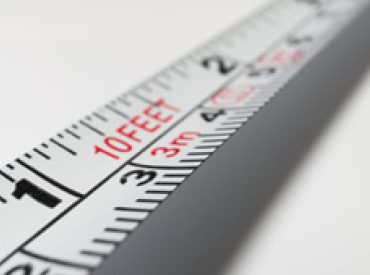Are High Testosterone Levels and Male Hair Loss Linked?
A team of scientists in Germany has set out to address one of the most burning issues in hair loss: namely the notion that high levels of testosterone and genetic baldness are inextricably linked.
High testosterone levels in men are something of a mixed blessing: on the one hand they can ensure a good supply of energy, a healthy libido and encourage muscle gain; on the other they can lead to mood swings, aggressiveness and lower sperm counts. And then there is hair loss: for decades, a definitive answer to the question “Do high testosterone levels also lead to thinning hair in men” has not been forthcoming.
To address this, seven doctors across Germany set out to find out once and for all whether the two were, in fact, linked.
Writing about the study published on the JAMA Dermatology website, the German research team noted that Androgenetic Alopecia affects at least 50 per cent of men by the time they are 50. “In vitro,” it states, “testosterone and oestrogen inhibit hair growth, suggesting that scalp hair growth may be controlled by these sex hormones.”
The team’s study took place across north-eastern Germany and involved 373 men, whose levels of sex hormones and hair shedding were both measured. After applying various important adjustments (such as age and other factors) to ensure accurate results, the team concluded that there were no significant associations between testosterone levels and hair loss in men.
“Previous studies with smaller sample sizes yielded similar negative findings,” it states.
The German results concur with most modern understandings of pattern baldness, namely that this type of inherited hair loss in men occurs when they have a genetic sensitivity to a testosterone by-product known as DHT. All men produce this by-product, but it is only in those men with a genetically pre-programmed sensitivity to it that it causes follicle shrinkage and gradual hair thinning around the top of the scalp and/or a receding hairline as these are the areas affected by hereditary hair loss. Ultimately if left untreated, this can also lead to baldness in these areas. However, because of DHT's close association with testosterone, people have often wondered if high testosterone levels equated to high levels of DHT and, perhaps, an increased in sensitivity to it.
"Whilst on the face of things, more testosterone would seem to logically equate to more DHT and therefore more hair loss for those with male pattern baldness. In reality, however, this does not appear to be the case," explains Belgravia superintendent pharmacist prescriber, Christina Chikaher. "Study findings seem to indicate that pattern hair loss is more about how sensitive someone is to DHT rather than how much testosterone is converted into DHT."
Male Hair Loss treatment can use one or both of the only two clinically-proven products to address the core biological events involved in genetic hair loss. These are the MHRA licensed and FDA approved medications, finasteride 1mg and minoxidil.
 Click to View Belgravia Centre Male Pattern Hair Loss Treatment Success Stories (Results may vary and are not guaranteed)
Click to View Belgravia Centre Male Pattern Hair Loss Treatment Success Stories (Results may vary and are not guaranteed)
The oral once-a-day tablet finasteride 1mg helps to stop the formation of DHT in the first place; this is known as a 'DHT blocker' and is only suitable for men aged 18 and over. By inhibiting DHT this medication can help to prevent baldness by allowing hair to grow unhindered, however, whether or not it works effectively on the hairline area is currently unknown.
The other treatment, high strength minoxidil comes in a range of formulations, all of which are applied topically to the scalp in order to promote accelerated hair growth.
In addition to these established medications, treatment courses can be further augmented by a number of supplementary hair growth products such as the HairMax LaserComb and Hair Vitalics food supplements.
The former is a patented device that is FDA cleared to promote hair growth and treat hair loss. It uses laser light energy to penetrate skin tissue and speed up hair growth. Hair Vitalics, meanwhile, is an exclusive food supplement designed by Belgravia hair specialists; this proprietary blend of vitamins, minerals, amino acids and botanical extracts contains biotin, zinc and selenium for the maintenance of normal healthy hair growth, and comes in highly-targeted men's and women's formulations.
The first signs of hairloss for most men will be the appearance of thinning hair around the front or top of the head, or, perhaps, an increase in the number of hairs spotted in the plughole. Treatment courses are usually most effective and tend to produce quicker results when started during these early signs of shedding, so a speedy and proactive response is recommended for any man who wants to keep his hair. Though as long as the follicles are still functioning, even if the hair is thinning, there is help available.
High testosterone levels in men are something of a mixed blessing: on the one hand they can ensure a good supply of energy, a healthy libido and encourage muscle gain; on the other they can lead to mood swings, aggressiveness and lower sperm counts. And then there is hair loss: for decades, a definitive answer to the question “Do high testosterone levels also lead to thinning hair in men” has not been forthcoming.
To address this, seven doctors across Germany set out to find out once and for all whether the two were, in fact, linked.
 In vitro growth inhibited
In vitro growth inhibited
Writing about the study published on the JAMA Dermatology website, the German research team noted that Androgenetic Alopecia affects at least 50 per cent of men by the time they are 50. “In vitro,” it states, “testosterone and oestrogen inhibit hair growth, suggesting that scalp hair growth may be controlled by these sex hormones.”
The team’s study took place across north-eastern Germany and involved 373 men, whose levels of sex hormones and hair shedding were both measured. After applying various important adjustments (such as age and other factors) to ensure accurate results, the team concluded that there were no significant associations between testosterone levels and hair loss in men.
“Previous studies with smaller sample sizes yielded similar negative findings,” it states.
The German results concur with most modern understandings of pattern baldness, namely that this type of inherited hair loss in men occurs when they have a genetic sensitivity to a testosterone by-product known as DHT. All men produce this by-product, but it is only in those men with a genetically pre-programmed sensitivity to it that it causes follicle shrinkage and gradual hair thinning around the top of the scalp and/or a receding hairline as these are the areas affected by hereditary hair loss. Ultimately if left untreated, this can also lead to baldness in these areas. However, because of DHT's close association with testosterone, people have often wondered if high testosterone levels equated to high levels of DHT and, perhaps, an increased in sensitivity to it.
"Whilst on the face of things, more testosterone would seem to logically equate to more DHT and therefore more hair loss for those with male pattern baldness. In reality, however, this does not appear to be the case," explains Belgravia superintendent pharmacist prescriber, Christina Chikaher. "Study findings seem to indicate that pattern hair loss is more about how sensitive someone is to DHT rather than how much testosterone is converted into DHT."
DHT blocker for male hair loss prevention
Male Hair Loss treatment can use one or both of the only two clinically-proven products to address the core biological events involved in genetic hair loss. These are the MHRA licensed and FDA approved medications, finasteride 1mg and minoxidil.
The oral once-a-day tablet finasteride 1mg helps to stop the formation of DHT in the first place; this is known as a 'DHT blocker' and is only suitable for men aged 18 and over. By inhibiting DHT this medication can help to prevent baldness by allowing hair to grow unhindered, however, whether or not it works effectively on the hairline area is currently unknown.
The other treatment, high strength minoxidil comes in a range of formulations, all of which are applied topically to the scalp in order to promote accelerated hair growth.
In addition to these established medications, treatment courses can be further augmented by a number of supplementary hair growth products such as the HairMax LaserComb and Hair Vitalics food supplements.
The former is a patented device that is FDA cleared to promote hair growth and treat hair loss. It uses laser light energy to penetrate skin tissue and speed up hair growth. Hair Vitalics, meanwhile, is an exclusive food supplement designed by Belgravia hair specialists; this proprietary blend of vitamins, minerals, amino acids and botanical extracts contains biotin, zinc and selenium for the maintenance of normal healthy hair growth, and comes in highly-targeted men's and women's formulations.
The first signs of hairloss for most men will be the appearance of thinning hair around the front or top of the head, or, perhaps, an increase in the number of hairs spotted in the plughole. Treatment courses are usually most effective and tend to produce quicker results when started during these early signs of shedding, so a speedy and proactive response is recommended for any man who wants to keep his hair. Though as long as the follicles are still functioning, even if the hair is thinning, there is help available.

The Belgravia Centre
The Belgravia Centre is a world-renowned group of a hair loss clinic in Central London, UK. If you are worried about hair loss you can arrange a free consultation with a hair loss expert or complete our Online Consultation from anywhere in the world for home-use treatment.
View our Hair Loss Success Stories, which includes the world's largest gallery of hair growth photos and demonstrates the level of success that so many of Belgravia's patients achieve.

